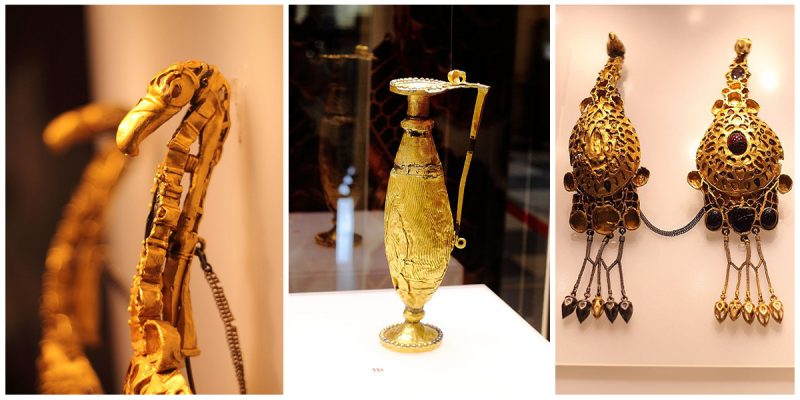The Pietroasele Treasure (or the Petrossa Treasure), nicknamed “The hatching hen and the golden chicken”, is the name given to a hoard of gold artifacts discovered in 1837 in an ancient grave in Pietroasele, Buzău County, Romania.
The treasure was discovered by two peasants from the village of Pietroasele, Ion Lemnaru and his father-in-law Stan Avram while cutting limestone in a quarry for the building of a bridge.
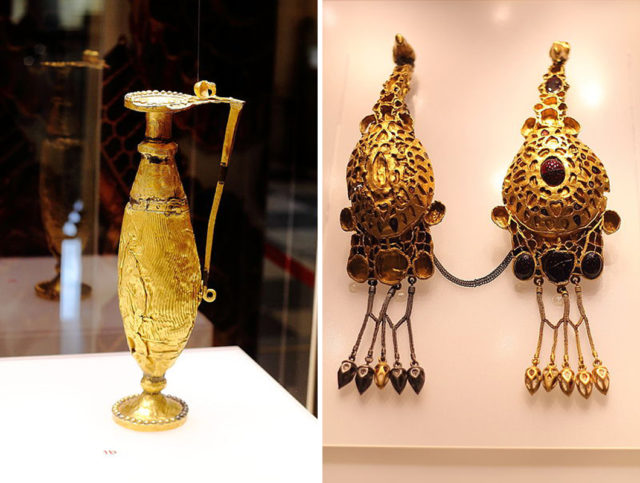
The two men discovered a hoard of 22 gold artifacts including one large eagle-headed fibula (a brooch or pin used to fasten garments), a patera (a shallow bowl with carved figures of what appear to be Gothic gods, used for libations), a large tray, a pitcher, a neck ring with a Runic inscription (known as the Ring of Pietroasele) and two other necklaces.
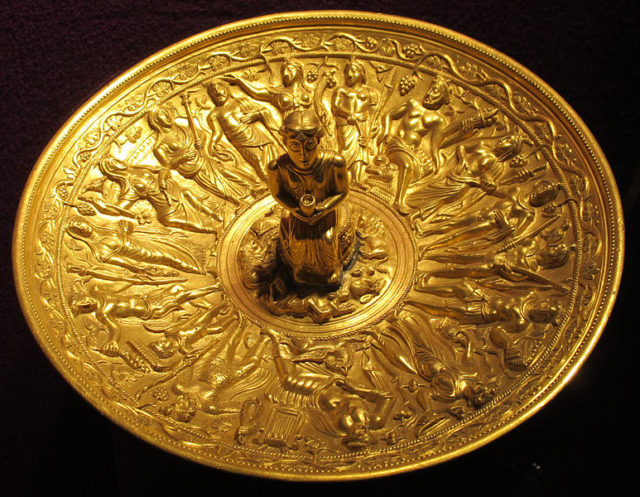
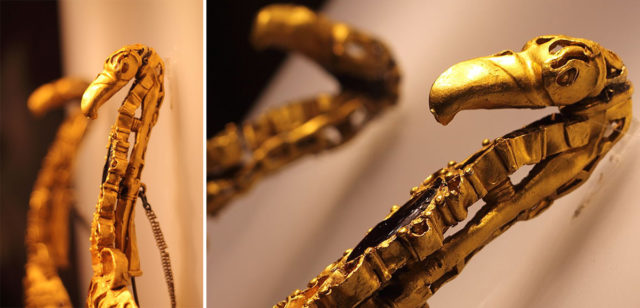
It has been reported that the two peasants kept the gold objects and then sold them to an Albanian businessman named Verussi. Verussi smashed the items into smaller pieces to make them more compact and easier to hide in order to sell them, avoiding any detection by the authorities during transport.
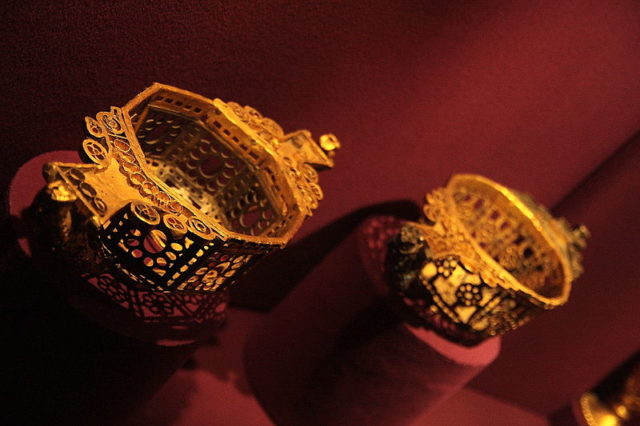
However, one year later, the information about this treasure reached the authorities of the Inland Affairs Department and the objects were seized.
In 1917, the treasure was shipped to Russia to be hidden, as German armies advanced through Romania in World War I, and returned to Romania in the 1950s.
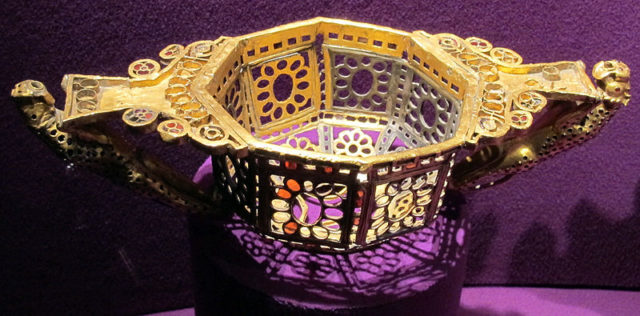
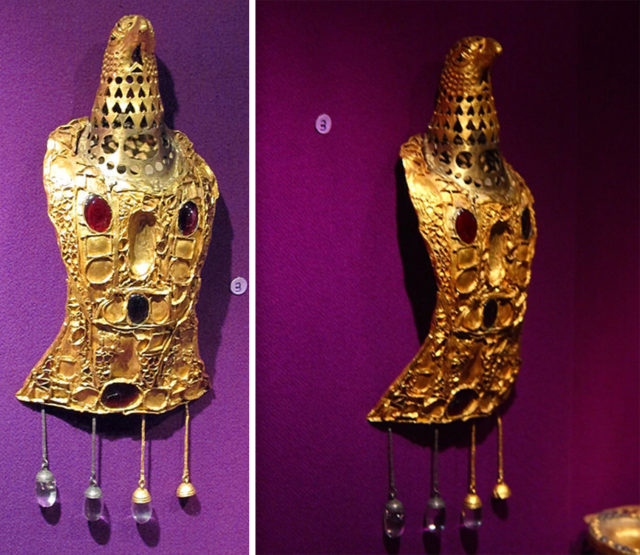
It is assumed that the gold objects belonged to the Visigoths (migratory nomadic tribes of Germanic peoples which arrived in the region of the Black Sea by the 3rd century A.D.), dated between the late 4th century AD and early 5th century AD, then buried around the middle of the latter century.
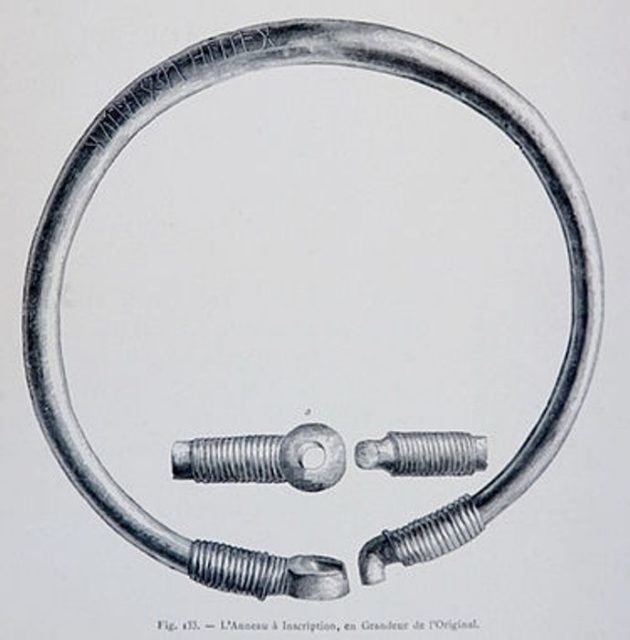
Apart from artistic representations of deities, Gothic religious beliefs can also be seen in other aspects of the treasure. For example, the runic inscriptions of the Ring of Pietroasele (known also as the Buzău torc) shed some light on the pre-Christian religious belief of the Goths.
The ring itself is generally assumed to be of Roman-Mediterranean origin and the symbols have been identified as belonging to the Elder Futhark alphabet.

Because the inscription sustained irreparable damage shortly after its discovery, scholars aren’t able to read it with certainty and it has been subjected to various attempts at reconstruction and interpretation. It has been suggested that they were meant to provide some sort of magical protection to its wearer.
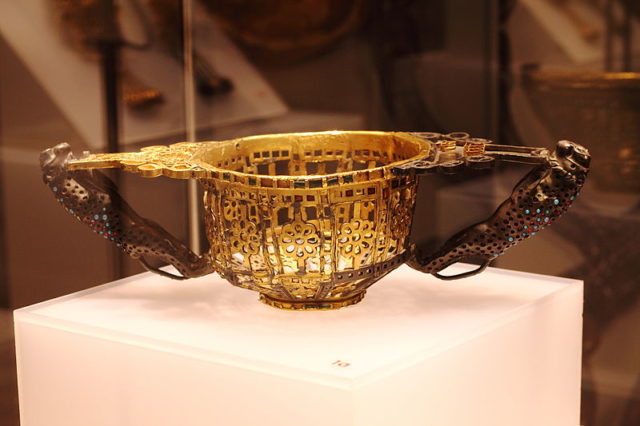
Of the twenty-two pieces (weighing 27 kg), only twelve (18,795 kg) have survived, and they are conserved at the National Museum of Romanian History, in Bucharest.
